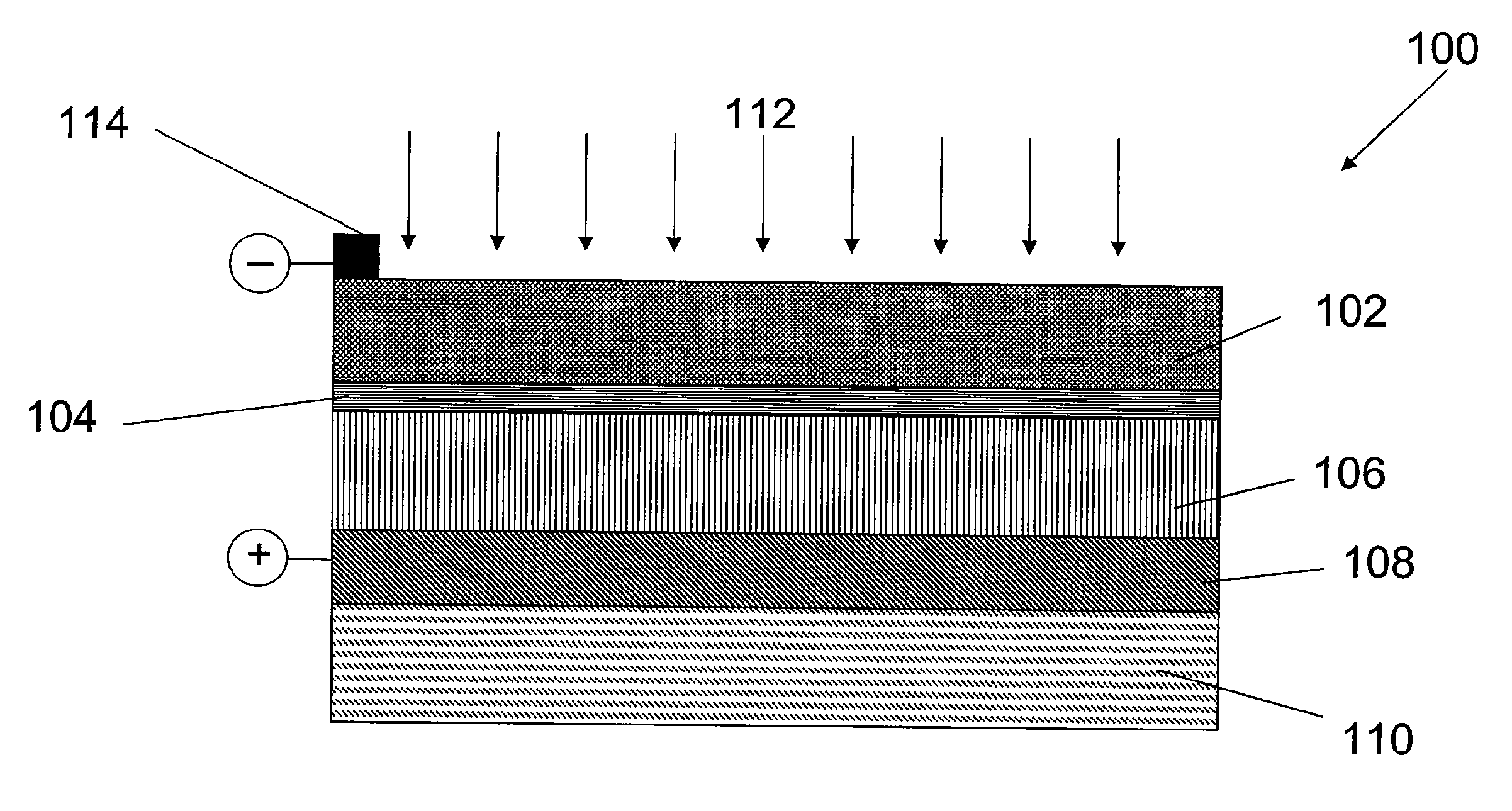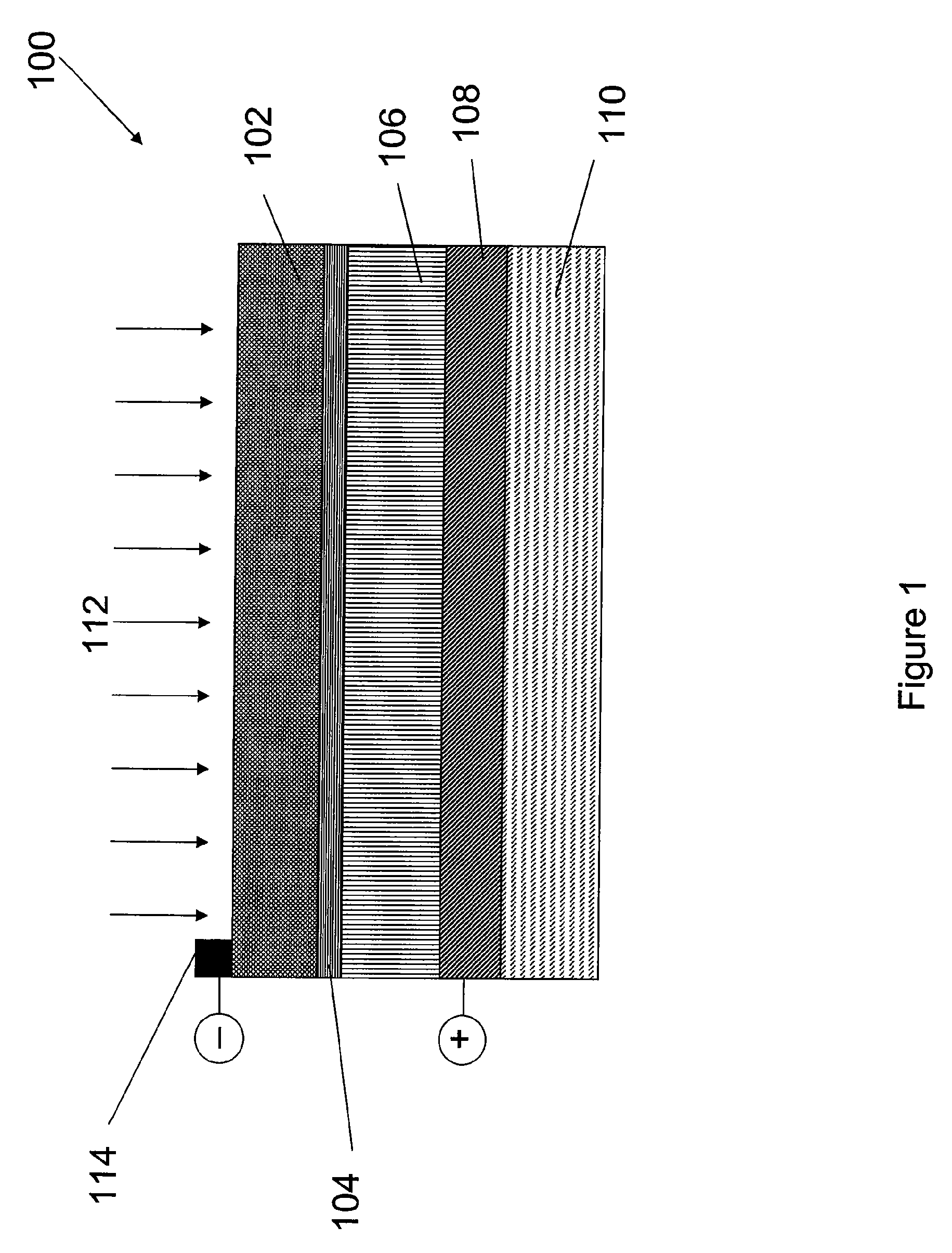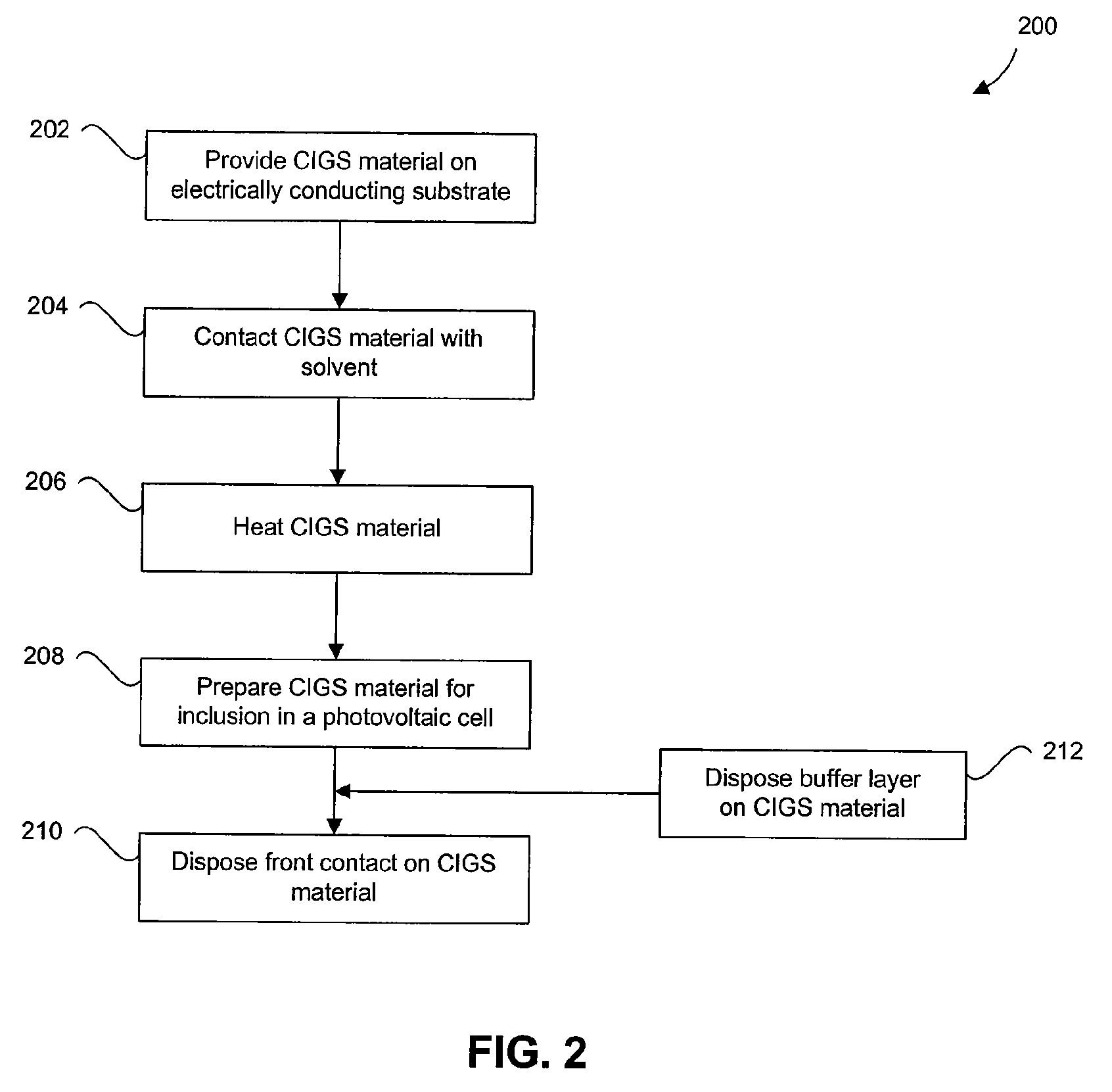Chemical Treatments to Enhance Photovoltaic Performance of CIGS
a technology of photovoltaic performance and chemical treatment, which is applied in the direction of sustainable manufacturing/processing, cleaning using liquids, and final product manufacturing, etc., can solve the problems of affecting the photovoltaic conversion efficiency of solar cells comprising these materials, and achieve the enhancement of solar cell conversion efficiency, reducing the density of states, and increasing the thickness of cigs thin films.
- Summary
- Abstract
- Description
- Claims
- Application Information
AI Technical Summary
Benefits of technology
Problems solved by technology
Method used
Image
Examples
example 1
[0060]CIGS cells are treated by either A) immersion in a 0.6 M solution of thiourea at 60° C. for 60 minutes; or B) immersion in a solution of eutectic comprising 0.6M thiourea and 0.3M choline chloride at 60° C. for 60 minutes.
[0061]The CIGS substrates are then rinsed with deionized water and dipped in a chemical bath to deposit a 500 Å thick cadmium sulfide film on the CIGS. The chemical bath comprises 0.0015M cadmium sulfate, 2.25M ammonium hydroxide and 0.075M thiourea. The cadmium sulfide film is deposited over a period of 20 minutes at about 53-56° C. The CIGS substrate is then washed with deionized water, air dried and annealed at a temperature of about 150° C. in an oven for 30 minutes. The substrate is then ready for further processing into a solar cell.
example 2
[0062]Photovoltaic devices prepared from CIGS batch number H103007 demonstrate the difference between untreated and thiourea treated substrates prior to complete device fabrication. Treatment parameters are provided in Table 1. The CIGS devices were characterized by standard current-voltage and quantum efficiency measurement techniques.
[0063]A comparison of two solar cell characteristics is illustrated in FIG. 3(a). For the treated cell, H103007-2, the Voc was 573.9 mV, the FF was 65.7%, the Jsc was 32.22 mA / cm2, and the efficiency was 12.1%. For the untreated cell, H103007-2N, the Voc was 523.7 mV, the FF was 59.2%, the Jsc was 31.06 mA / cm2, and the efficiency was 9.6%.
[0064]The device parameters for treated and untreated CIGS solar cells are listed in Table 1 for comparison.
TABLE 1Solar Cell Improvement by TU Solution Treatment of CIGS Films.JscSample No.TreatmentVoc mVFF %mA / cm2Eff %H103007-1TU, 0.6M,565.866.431.811.960° C., 60 minH103007-1NNone548.263.131.8611.0H103007-2A1TU, 0....
example 3
[0066]In this example, an improvement in CIGS device efficiencies associated with TU treatment is illustrated in a different batch of CIGS.
TABLE 2JscSample No.TreatmentVoc mVFF %mA / cm2Eff %H010606-2A1TU, 0.6M, 60° C.,582.671.9930.1412.6460 minH010606-2B1TU, 0.6M, 60° C.,576.570.830.9912.6560 minH010606-5A1TU, 0.6M, 60° C.,571.472.9830.412.6860 minH010606-5B3TU, 0.6M, 60° C.,561.772.6529.9512.2260 minAverage573.0572.1130.3712.55H010606-6A3None606.468.8728.7612.01H010606-3A1None563.369.8329.111.45H010606-3B1None583.969.6730.1612.27H010606-3B2None562.670.1730.2911.96Average579.0569.6429.5811.92
PUM
| Property | Measurement | Unit |
|---|---|---|
| Molar density | aaaaa | aaaaa |
| Molar density | aaaaa | aaaaa |
| Molar density | aaaaa | aaaaa |
Abstract
Description
Claims
Application Information
 Login to View More
Login to View More - R&D
- Intellectual Property
- Life Sciences
- Materials
- Tech Scout
- Unparalleled Data Quality
- Higher Quality Content
- 60% Fewer Hallucinations
Browse by: Latest US Patents, China's latest patents, Technical Efficacy Thesaurus, Application Domain, Technology Topic, Popular Technical Reports.
© 2025 PatSnap. All rights reserved.Legal|Privacy policy|Modern Slavery Act Transparency Statement|Sitemap|About US| Contact US: help@patsnap.com



